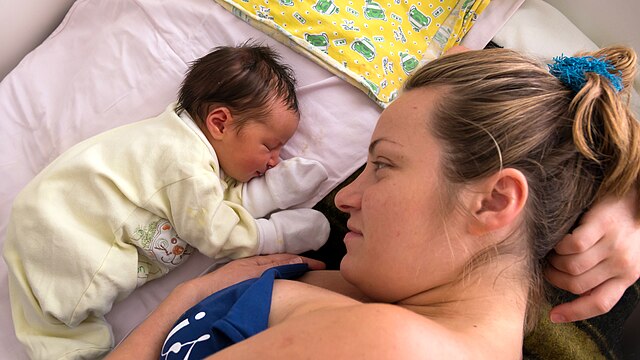Introduction
Becoming a parent is often celebrated as a time of immense joy and fulfillment. However, for many new mothers, this period can also bring unexpected and overwhelming emotions, particularly postpartum depression (PPD). This guide aims to provide an in-depth understanding of postpartum depression, covering its symptoms, causes, treatments, and ways to seek help. Recognizing and addressing PPD is crucial for the well-being of both the mother and the baby.
What is Postpartum Depression?
Postpartum depression is a form of major depression that occurs after childbirth. It is characterized by a complex mix of physical, emotional, and behavioral changes. PPD typically begins within the first four weeks after delivery but can develop anytime within the first year postpartum. Unlike the “baby blues,” which many women experience and typically resolve within two weeks, postpartum depression is more severe and long-lasting, requiring medical intervention.

Symptoms of Postpartum Depression
The symptoms of postpartum depression can vary widely in their severity and duration. Common symptoms include:
- Persistent sadness or low mood: Feeling sad or empty most of the day, nearly every day.
- Loss of interest in activities: A lack of interest or pleasure in activities that were once enjoyed.
- Extreme fatigue or loss of energy: Persistent tiredness and lack of energy, even after resting.
- Sleep disturbances: Difficulty sleeping (insomnia) or sleeping too much (hypersomnia).
- Changes in appetite or weight: Significant weight loss or gain unrelated to dieting.
- Feelings of worthlessness or guilt: Excessive guilt or feelings of worthlessness or inadequacy.
- Difficulty concentrating: Trouble focusing, making decisions, or remembering things.
- Anxiety or panic attacks: High levels of anxiety, which can sometimes lead to panic attacks.
- Thoughts of self-harm or harming the baby: Intrusive thoughts about harming oneself or the newborn, which require immediate medical attention.
Recognizing these symptoms early and differentiating them from the milder “baby blues” is essential for timely intervention and treatment.
Causes and Risk Factors
The exact cause of postpartum depression is not entirely understood, but it is believed to result from a combination of hormonal, psychological, and environmental factors. Some of the key contributors include:
Hormonal Changes
After childbirth, there is a dramatic drop in the levels of hormones estrogen and progesterone in a woman’s body. These changes can trigger mood swings and contribute to the onset of PPD. Additionally, thyroid hormone levels may drop, leading to fatigue and depression-like symptoms.
Physical Changes
The physical toll of childbirth, including pain, discomfort, and changes in body weight and appearance, can affect a woman’s mental health. Recovery from a difficult labor or delivery can further exacerbate feelings of vulnerability and emotional instability.
Emotional Factors
The transition to motherhood brings significant emotional changes. New mothers may feel anxious about their ability to care for the newborn, struggle with their new identity, and experience a sense of loss of control over their lives. The overwhelming responsibility of caring for a newborn, coupled with sleep deprivation, can intensify these feelings.
Lifestyle Influences
Certain lifestyle factors can increase the risk of developing PPD. These include:
- Lack of sleep: Sleep deprivation is common in the postpartum period and can significantly affect mood and energy levels.
- Social isolation: Feeling isolated and without sufficient support from family or friends can exacerbate feelings of loneliness and depression.
- Financial stress: Worries about the financial costs of raising a child can add to the stress.
- Relationship issues: Problems with a partner or lack of support in the relationship can contribute to emotional distress.
History of Depression
Women with a personal or family history of depression or other mental health disorders are at a higher risk of developing postpartum depression. Previous episodes of depression, particularly during or after previous pregnancies, can increase vulnerability.

Treatment and Management
Treatment for postpartum depression is crucial to ensure the health and well-being of both the mother and the baby. Effective treatments include a combination of therapy, medication, support, and self-care strategies.
Therapy
Psychotherapy, or talk therapy, is often the first line of treatment for postpartum depression. Two effective forms of psychotherapy are:
- Cognitive-Behavioral Therapy (CBT): This therapy helps individuals identify and change negative thought patterns and behaviors.
- Interpersonal Therapy (IPT): This therapy focuses on improving interpersonal relationships and social functioning, which can be particularly beneficial for new mothers.
Medication
Antidepressant medications may be prescribed to help manage the symptoms of postpartum depression. Selective serotonin reuptake inhibitors (SSRIs) are commonly used and are generally considered safe for breastfeeding mothers. However, it’s essential to discuss the risks and benefits with a healthcare provider.
Support Groups
Joining a support group for new mothers experiencing postpartum depression can provide emotional support and practical advice. Sharing experiences with others who understand the challenges can be incredibly comforting and reassuring.
Self-Care
Encouraging new mothers to prioritize self-care is vital in managing postpartum depression. Self-care strategies include:
- Adequate sleep: Finding ways to get more rest, such as napping when the baby sleeps.
- Proper nutrition: Eating a balanced diet to maintain energy levels.
- Regular exercise: Engaging in physical activity to improve mood and reduce stress.
- Taking time for oneself: Finding moments to relax and engage in activities that bring joy and relaxation.
Partner and Family Support
Support from partners, family members, and friends is crucial in the recovery process. Educating loved ones about postpartum depression can help them understand what the new mother is going through and how best to support her. Encouraging open communication and providing practical help with childcare and household tasks can alleviate some of the pressures.
Seeking Help
If you or someone you know is experiencing symptoms of postpartum depression, it is essential to seek help immediately. Here are steps to take:
- Contact a healthcare provider: Schedule an appointment with a doctor or mental health professional to discuss symptoms and treatment options.
- Reach out to a therapist or counselor: Professional therapy can provide coping strategies and emotional support.
- Join a support group: Connecting with other mothers facing similar challenges can provide a sense of community and understanding.
- Inform family and friends: Letting loved ones know about the struggles can lead to better support and assistance.
Early intervention can significantly improve outcomes for both the mother and the baby. Postpartum depression is a treatable condition, and seeking help is a crucial step towards recovery.
Conclusion
Postpartum depression is a serious condition that affects many new mothers, but with proper understanding, treatment, and support, it is manageable. Recognizing the signs and symptoms, knowing the risk factors, and seeking timely help are crucial steps in overcoming this challenging period. By raising awareness and promoting education, we can help new mothers navigate this time with compassion and care.
If you or someone you know is struggling with postpartum depression, know that help is available. Speak to a healthcare provider, reach out to loved ones, and remember that healing is possible.
Referecnes
- American Psychological Association. (2020). Postpartum Depression. Retrieved from APA.
- Mayo Clinic Staff. (2021). Postpartum Depression. Mayo Clinic. Retrieved from Mayo Clinic.
- National Institute of Mental Health. (2021). Postpartum Depression Facts. Retrieved from NIMH.
- Postpartum Support International. (2021). Postpartum Depression. Retrieved from PSI.
- Beck, C. T. (2001). Predictors of postpartum depression: An update. Nursing Research, 50(5), 275-285.
- O’Hara, M. W., & Swain, A. M. (1996). Rates and risk of postpartum depression—a meta-analysis. International Review of Psychiatry, 8(1), 37-54.
- Yim, I. S., Tanner Stapleton, L. R., Guardino, C. M., Hahn-Holbrook, J., & Dunkel Schetter, C. (2015). Biological and psychosocial predictors of postpartum depression: Systematic review and call for integration. Annual Review of Clinical Psychology, 11, 99-137.
- Dennis, C. L., & Hodnett, E. (2007). Psychosocial and psychological interventions for treating postpartum depression. Cochrane Database of Systematic Reviews, (4).
- Grote, N. K., Bridge, J. A., Gavin, A. R., Melville, J. L., Iyengar, S., & Katon, W. J. (2010). A meta-analysis of depression during pregnancy and the risk of preterm birth, low birth weight, and intrauterine growth restriction. Archives of General Psychiatry, 67(10), 1012-1024.
- Sit, D., Rothschild, A. J., & Wisner, K. L. (2006). A review of postpartum psychosis. Journal of Women’s Health, 15(4), 352-368.
- Stewart, D. E., Robertson, E., Dennis, C. L., Grace, S. L., & Wallington, T. (2003). Postpartum depression: Literature review of risk factors and interventions. University Health Network Women’s Health Program.
- Segre, L. S., O’Hara, M. W., Arndt, S., & Stuart, S. (2007). The prevalence of postpartum depression: The relative significance of three social status indices. Social Psychiatry and Psychiatric Epidemiology, 42(4), 316-321.
- Lindahl, V., Pearson, J. L., & Colpe, L. (2005). Prevalence of suicidality during pregnancy and the postpartum. Archives of Women’s Mental Health, 8(2), 77-87.
- Milgrom, J., & Gemmill, A. W. (2015). Identifying perinatal depression and anxiety: Evidence-based practice in screening, psychosocial assessment, and management. John Wiley & Sons.
- Beck, C. T. (1995). The effects of postpartum depression on maternal-infant interaction: A meta-analysis. Nursing Research, 44(5), 298-304.
- Goodman, J. H. (2004). Postpartum depression beyond the early postpartum period. Journal of Obstetric, Gynecologic, & Neonatal Nursing, 33(4), 410-420.
- Bloch, M., Rotenberg, N., Koren, D., & Klein, E. (2006). Risk factors for early postpartum depressive symptoms. General Hospital Psychiatry, 28(1), 3-8.
- Cooper, P. J., & Murray, L. (1998). Postnatal depression. BMJ, 316(7148), 1884-1886.
- Reck, C., Stehle, E., Reinig, K., & Mundt, C. (2009). Maternity blues as a predictor of DSM-IV depression and anxiety disorders in the first three months postpartum. Journal of Affective Disorders, 113(1-2), 77-87.
- Kumar, R., & Robson, K. M. (1984). A prospective study of emotional disorders in childbearing women. British Journal of Psychiatry, 144(1), 35-47.
- Murray, L., & Cooper, P. J. (2003). Effects of postnatal depression on infant development. Archives of Disease in Childhood, 88(8), 738-739.
- Paulson, J. F., & Bazemore, S. D. (2010). Prenatal and postpartum depression in fathers and its association with maternal depression: A meta-analysis. JAMA, 303(19), 1961-1969.
- Cox, J. L., Holden, J. M., & Sagovsky, R. (1987). Detection of postnatal depression. Development of the 10-item Edinburgh Postnatal Depression Scale. British Journal of Psychiatry, 150(6), 782-786.
- Gjerdingen, D. K., & Yawn, B. P. (2007). Postpartum depression screening: Importance, methods, barriers, and recommendations for practice. Journal of the American Board of Family Medicine, 20(3), 280-288.
- Pearlstein, T., Howard, M., Salisbury, A., & Zlotnick, C. (2009). Postpartum depression. American Journal of Obstetrics and Gynecology, 200(4), 357-364.
- Wisner, K. L., Sit, D. K., McShea, M. C., Rizzo, D. M., Zoretich, R. A., Hughes, C. L., … & Hanusa, B. H. (2013). Onset timing, thoughts of self-harm, and diagnoses in postpartum women with screen-positive depression findings. JAMA Psychiatry, 70(5), 490-498.
- Field, T. (2010). Postpartum depression effects on early interactions, parenting, and safety practices: A review. Infant Behavior and Development, 33(1), 1-6.
- Brockington, I. (2004). Postpartum psychiatric disorders. The Lancet, 363(9405), 303-310.
- Letourneau, N., Dennis, C. L., Cosic, N., & Linder, J. (2007). The effect of perinatal depression treatment for mothers on parenting and child development: A systematic review. Depression and Anxiety, 24(6), 523-538.
- Henshaw, C., & Elliott, S. A. (2005). Screening for perinatal depression. In Perinatal mental health: A clinical guide (pp. 29-39). RCPsych Publications.
- Murray, L., Fiori-Cowley, A., Hooper, R., & Cooper, P. (1996). The impact of postnatal depression and associated adversity on early mother-infant interactions and later infant outcome. Child Development, 67(5), 2512-2526.
- Dennis, C. L. (2004). Can we identify mothers at risk for postpartum depression in the immediate postpartum period using the Edinburgh Postnatal Depression Scale? Journal of Affective Disorders, 78(2), 163-169.
- Beck, C. T. (2002). Revision of the Postpartum Depression Predictors Inventory. Journal of Obstetric, Gynecologic, & Neonatal Nursing, 31(4), 394-402.
- Appleby, L., Warner, R., Whitton, A., & Faragher, B. (1997). A controlled study of fluoxetine and cognitive-behavioural counselling in the treatment of postnatal depression. BMJ, 314(7085), 932-936.
- Gaynes, B. N., Gavin, N., Meltzer-Brody, S., Lohr, K. N., Swinson, T., Gartlehner, G., … & Miller, W. C. (2005). Perinatal depression: Prevalence, screening accuracy, and screening outcomes. Evidence Report/Technology Assessment, (119), 1-8.
- Robertson, E., Grace, S., Wallington, T., & Stewart, D. E. (2004). Antenatal risk factors for postpartum depression: A synthesis of recent literature. General Hospital Psychiatry, 26(4), 289-295.
- O’Hara, M. W., & McCabe, J. E. (2013). Postpartum depression: Current status and future directions. Annual Review of Clinical Psychology, 9, 379-407.
- Stuart, S., & Koleva, H. (2014). Psychological treatments for perinatal depression. Best Practice & Research Clinical Obstetrics & Gynaecology, 28(1), 61-70.
- Gold, L. H. (2002). Postpartum disorders in primary care: Diagnosis and treatment. Primary Care: Clinics in Office Practice, 29(1), 27-41.
- Logsdon, M. C., Wisner, K. L., & Pinto-Foltz, M. D. (2006). The impact of postpartum depression on mothering. Journal of Obstetric, Gynecologic, & Neonatal Nursing, 35(5), 652-658.
- Shakespeare, J., Blake, F., & Garcia, J. (2003). A qualitative study of the acceptability of routine screening of postnatal women using the Edinburgh Postnatal Depression Scale. British Journal of General Practice, 53(493), 614-619.
- Misri, S., & Kendrick, K. (2008). Treatment of perinatal mood and anxiety disorders: A review. Canadian Journal of Psychiatry, 53(8), 489-498.
- Smith, M. V., Shao, L., Howell, H., Lin, H., & Yonkers, K. A. (2011). Perinatal depression and birth outcomes in a Healthy Start project. Maternal and Child Health Journal, 15(3), 401-409.
- Norhayati, M. N., Hazlina, N. H., Asrenee, A. R., & Emilin, W. M. A. (2015). Magnitude and risk factors for postpartum symptoms: A literature review. Journal of Affective Disorders, 175, 34-52.
- Kornfield, S. L., Edwards, E. R., Byrd, M. E., & Caine, V. A. (2016). The influence of sociocultural and structural factors on postnatal depression. Journal of Nursing Scholarship, 48(4), 350-359.
- Patel, M., Bailey, R. K., Jabeen, S., Ali, S., Barker, N. C., & Osiezagha, K. (2012). Postpartum depression: A review. Journal of Health Care for the Poor and Underserved, 23(2), 534-542.
- Wisner, K. L., Parry, B. L., & Piontek, C. M. (2002). Postpartum depression. New England Journal of Medicine, 347(3), 194-199.
- Spinelli, M. G. (1998). Antepartum and postpartum depression. Journal of Gender-Specific Medicine, 1(2), 45-51.
- Bowen, A., & Muhajarine, N. (2006). Antenatal depression. Canadian Nurse, 102(9), 26-30.
- Cox, E. Q., Sowa, N. A., Meltzer-Brody, S., & Gaynes, B. N. (2016). The perinatal depression treatment cascade: Baby steps toward improving outcomes. Journal of Clinical Psychiatry, 77(9), 1189-1200.

